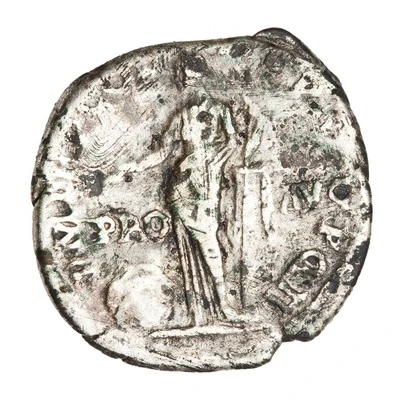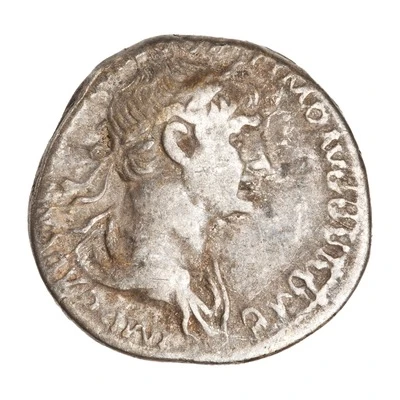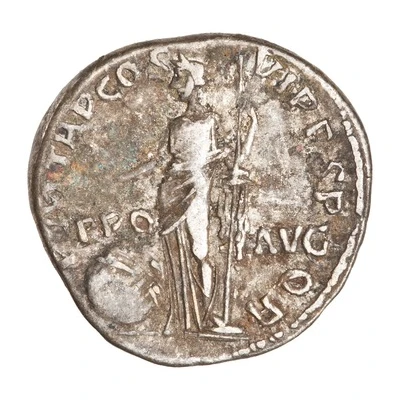


© American Numismatic Society (ANS)
Denarius - Trajan P M TR P COS VI P P S P Q R PRO AVG; Providentia
| Silver | 3.1 g | 18 mm |
| Issuer | Rome › Roman Empire (27 BC - 395 AD) |
|---|---|
| Emperor | Trajan (Marcus Ulpius Traianus) (98-117) |
| Type | Standard circulation coin |
| Years | 114-117 |
| Value | 1 Denarius |
| Currency | Denarius, Reform of Augustus (27 BC – AD 215) |
| Composition | Silver |
| Weight | 3.1 g |
| Diameter | 18 mm |
| Shape | Round (irregular) |
| Technique | Hammered |
| Demonetized | Yes |
| Updated | 2024-10-05 |
| Numista | N#253289 |
|---|---|
| Rarity index | 100% |
Reverse
Providentia, draped, standing left, pointing with right hand at large globe to left, and holding vertical sceptre in left, with left elbow resting on column.
Script: Latin
Lettering: P M TR P COS VI P P S P Q R PRO AVG
Translation:
Pontifex Maximus, Tribunicia Potestate, Consul Sextum, Pater Patriae, Senatus Populusque Romanus, PRO Augustus.
High priest, holder of tribunician power, consul for the sixth time, father of the nation, The senate and the Roman people, PRO emperor (Augustus).
Comment
Mass varies: 3.01–3.1 g;Diameter varies: 17–18.5 mm;
Source: Online Coins of the Roman Empire (OCRE)
Interesting fact
The Denarius - Trajan coin features an image of the Roman goddess Providentia on the reverse side, which is an interesting fact in itself. Providentia was the goddess of foresight and forward planning, and her presence on the coin may suggest that the Roman Empire was placing a strong emphasis on careful planning and preparation during the reign of Trajan. Additionally, the coin's obverse side features an image of Trajan himself, which is also notable. Trajan was a highly respected and successful Roman emperor, known for his military conquests and extensive public building programs. His image on the coin serves as a reminder of the powerful and influential leader who ruled the Roman Empire during this time period. Overall, the Denarius - Trajan coin offers a fascinating glimpse into the culture, beliefs, and values of the Roman Empire during the 2nd century AD.

